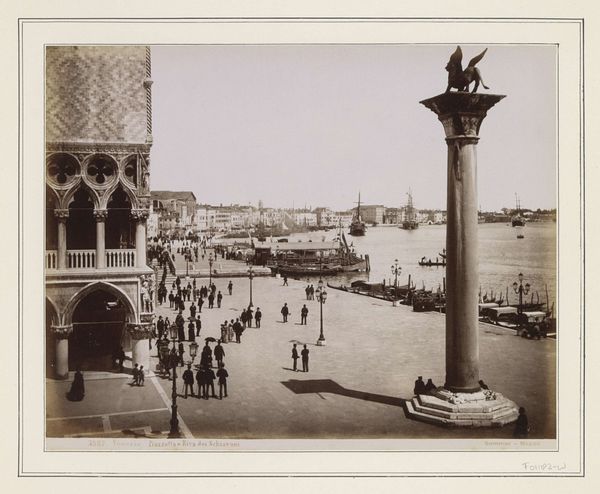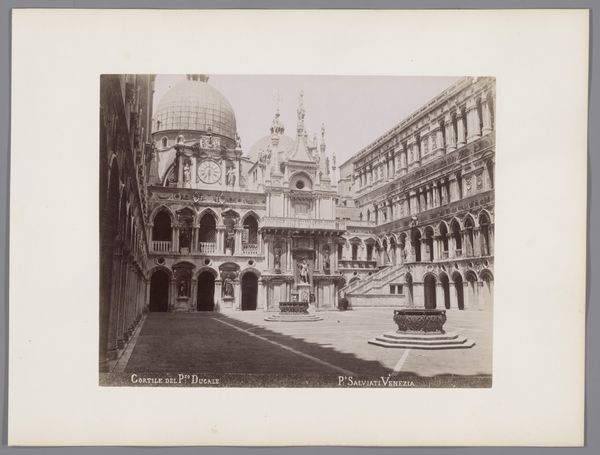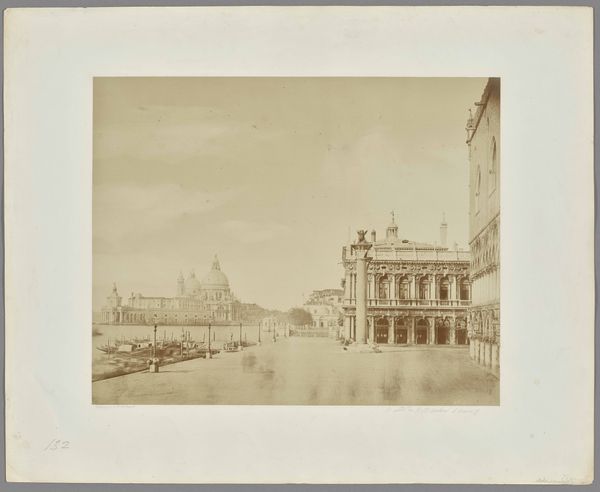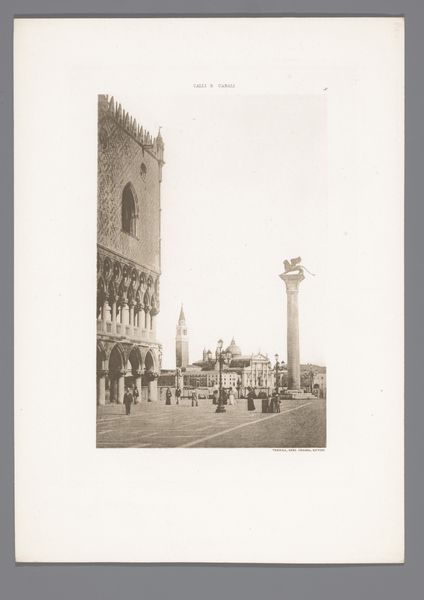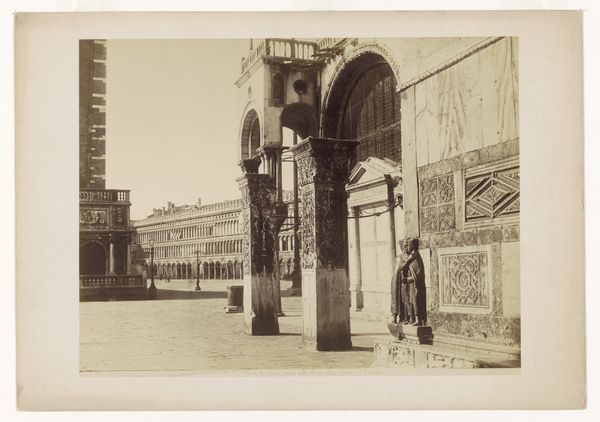
Dimensions: height 318 mm, width 453 mm, height 267 mm, width 358 mm
Copyright: Rijks Museum: Open Domain
Curator: This photograph offers a glimpse of the San Marco Square in Venice, taken sometime between 1851 and 1900 by Carlo Naya. Editor: The vastness of the square dominates! You really feel the scale of Venice’s architectural might. There's a stillness, an emptiness to it, despite the imposing structures that frame the space. Curator: I’m immediately drawn to the material processes behind Naya’s creation, which give rise to this “stillness” you observe. Photography in this period was a cumbersome, alchemic act, demanding patience. It transforms a bustling public space into this almost melancholic vista. The wet collodion process, the glass plates… everything feels imbued with the weight of craft. Editor: Indeed, but consider Naya's intent! He presents a city deeply shaped by centuries of commerce, power, and human stories. He seems to freeze time to emphasize these qualities! The Doge's Palace looks almost like a theatrical backdrop, right? The solitary figure only highlights the vastness. It's a wistful silence, hinting at something profound lurking beneath the surface. Curator: That loneliness feels so striking. Venice is notoriously teeming, isn’t it? By capturing it empty like this, perhaps he's focusing on its foundations, its physical essence detached from modern commodity and display, hinting that its story could one day pass like all physical realities. It reveals the social dynamics through their striking absence! The lack of contemporary fashion—all replaced by Naya's technique, choices, and gaze. Editor: Absolutely. The photo offers more than a snapshot; it poses a philosophical question. Venice's story may fade someday—what could it be replaced with? Perhaps what Naya has framed suggests the only way for its stories to exist beyond any possible collapse. Maybe that’s the photograph’s quiet, subtle terror. Curator: Precisely, the artist might have found the key by using the physical means, to preserve a vision. In essence, it prompts us to consider our relationship to the tangible, and its relation to preservation in a world increasingly obsessed with speed and superficial impressions. Editor: Thank you for emphasizing those elements with such clarity.
Comments
No comments
Be the first to comment and join the conversation on the ultimate creative platform.
